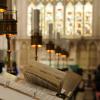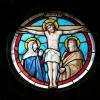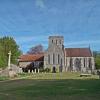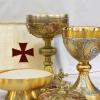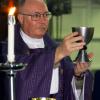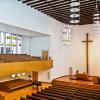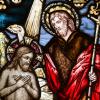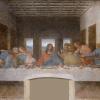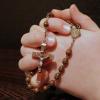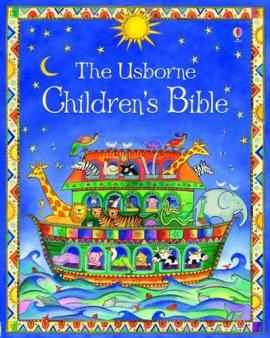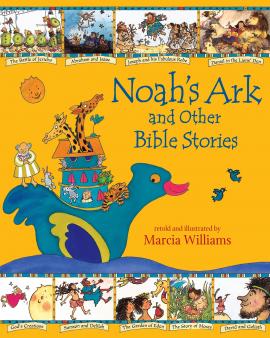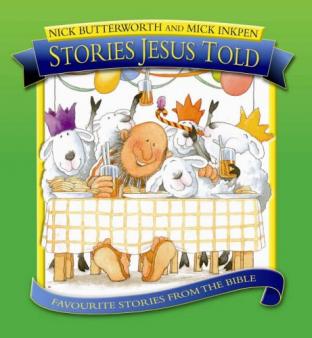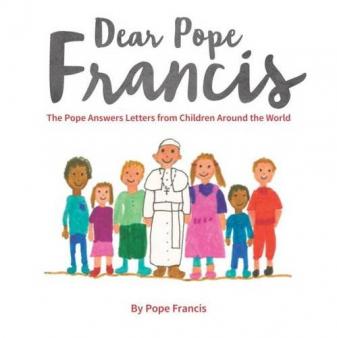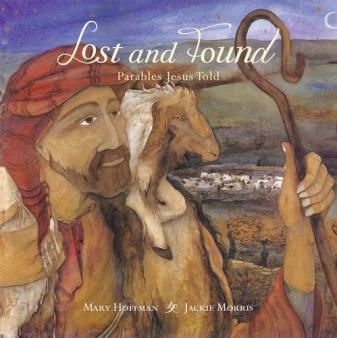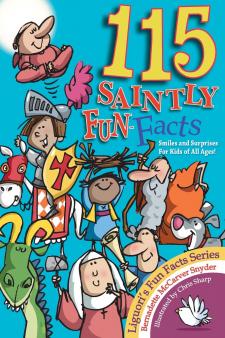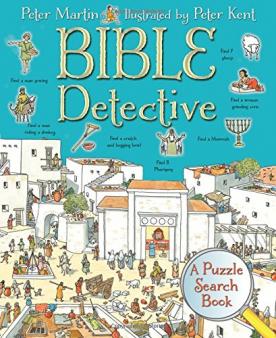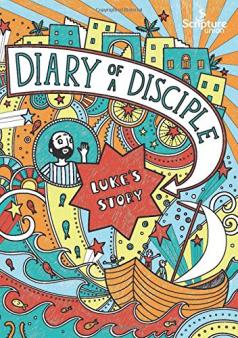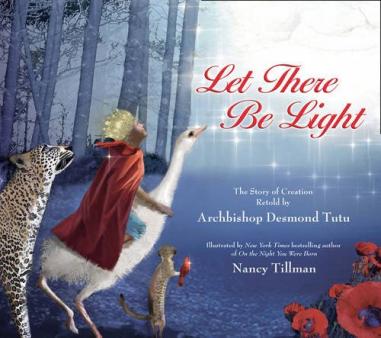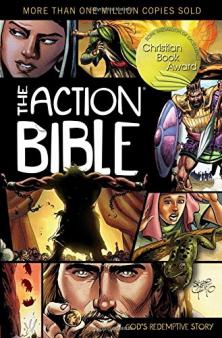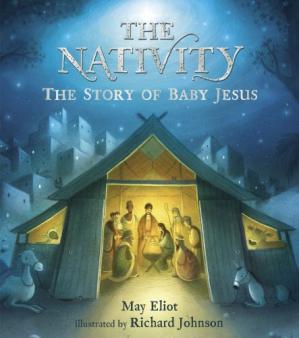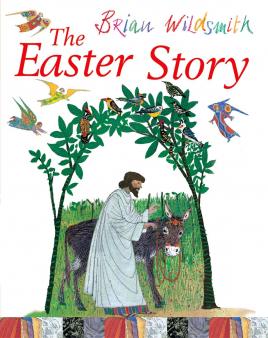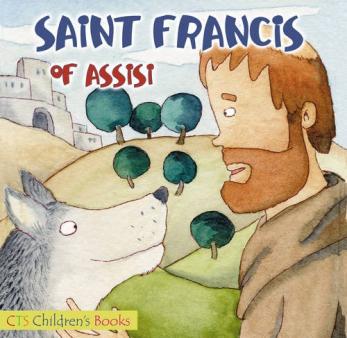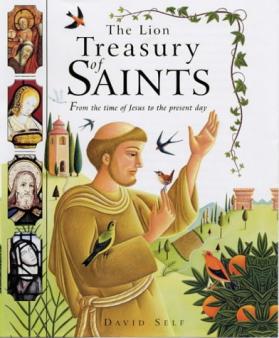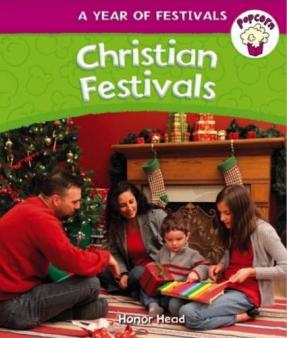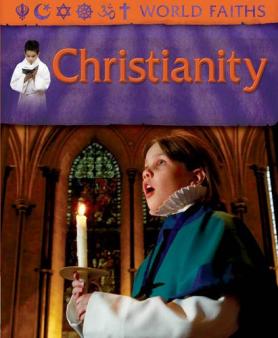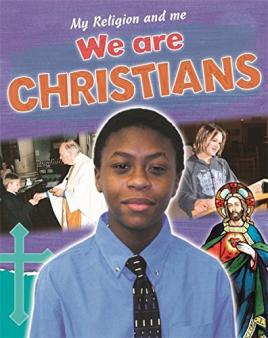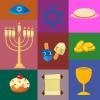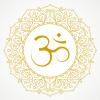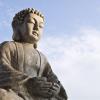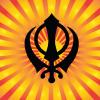Christianity
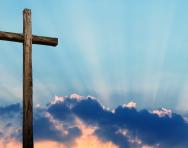
Christianity is the religion with the most followers in the world; almost a third of the world’s population are Christians.
Like Jews and Muslims, Christians believe in just one God who created the world and all that is in it.
Christians follow the teachings of Jesus Christ, a preacher and healer who lived in the Middle East more than 2000 years ago. Christians believe that Jesus was the Son of God, sent down to earth to save people by dying on the cross and taking the punishment for their sins. It is through looking at Jesus’s life and example that Christians believe they can learn what God is like.
Top 10 facts
- Christianity is the world’s largest religion.
- People who follow Christianity are called Christians.
- Christians have one God, who they believe created the world in just six days and continues to watch over it.
- Christians believe that God is everywhere and sees and knows everything.
- Today there are about 2.2 billion Christians in the world – almost a third of the world’s population.
- Christians got their name because of their belief in Jesus Christ, a preacher and healer who lived more than 2000 years ago in Israel in the Middle East.
- Jesus was born to an ordinary Jewish couple, Mary and Joseph, in Bethlehem. Most children know the famous Nativity story which describes his birth.
- Christians believe that Jesus was the son of God, sent down to earth to save people and teach them about God.
- The word Christ comes from a Greek word meaning Messiah, God’s chosen one.
- A church is a building where Christians worship.
Timeline
- 313Three hundred years after the birth of Christ the Roman emperor Constantine became a Christian and made Christianity a legal religion.
- 325At the council of Nicea, summoned by Constantine, a statement of Christian beliefs outlined teachings of the Christian faith including the idea of the Trinity.
- 1054Following a disagreement between the leaders of the Christian church in Rome and Constantinople, the church split into two branches which became known as the Roman Catholic Church and the Orthodox Church.
- 1517During the Reformation, new ideas about the Christian faith became popular. Following the ideas of Martin Luther in Germany and John Calvin in France, the Protestant Church was established.
- 1529King Henry VIII of England declared himself head of the church in England. His daughter Elizabeth I established the Church of England.
- 1620The Puritans, members of one of the Nonconformist churches (Quakers, Baptists, Lutherans), sailed to America in a ship called the Mayflower.

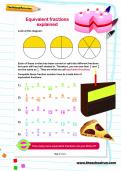
Boost Your Child's Learning Today!
- Start your child on a tailored learning programme
- Get weekly English & maths resources sent direct to your inbox
- Keep your child's learning on track
Did you know?
Christians celebrate Jesus’s birth every year on 25th December – Christmas Day – but no one knows exactly when he was born. The first Christians did not celebrate Jesus’s birth.
At the age of 30, Jesus travelled all over his country teaching others about God, encouraging people to love and respect each other. He became known for healing sick people and performing miracles; perhaps the most famous was when he was said to have fed five thousand people with just five loaves and two fish! Jesus always attracted large crowds of people whenever he came to talk and he told many stories to teach people about God, but the religious leaders of the time did not like what he had to say.
Christians think that God can be seen in three ways, which is known as the Holy Trinity:
- God the Father, who created and cares for the world and everything in it.
- God the Son, who came down to earth as Jesus.
- God the Holy Spirit, which symbolises God’s power living within Christians.
The Bible is the holy book of Christians. The Christian Bible contains the Old Testament and the New Testament. The Old Testament contains the same books as the Jewish Bible (although Christians have a different view of what is written down) and was written before Jesus’s birth. The New Testament contains stories about Jesus written by people who met him or had heard of him.
Sunday is a time when most Christians meet to worship God, whether in a church, a hall or someone's house.
A church can be big, small, old, new, plain or highly decorated. You will find that the floor plan of many churches is in the shape of a cross.
Church services usually include prayers, hymns and readings from the Bible.
Christians believe that praying to God allows them to say sorry for the things they have done wrong and thank you for their blessings, to pray for other people (for example, for healing) and to pray for his help and strength for themselves. Christians believe that God wants them to be like Jesus Christ and carry on the good work he did in the world.
All Christians share common beliefs but there are different branches of Christianity. These include:
- The Church of England (the officially established Christian church in England)
- The Roman Catholic Church (which is headed by the Pope)
- Baptists
- Methodists
- Presbyterians
- Quakers
Look through the gallery and see if you can spot the following:
- The chancel (the space around the altar and where the choir sit) in Bath Abbey
- A stained glass depiction of Jesus on the cross
- The enormous statue of Christ the Redeemer in Rio de Janiero, Brazil
- A church in Amesbury, England
- The Eucharist
- A priest during a church service
- Two churches, one medieval and one modern
- A stained-glass church window
- Cologne Cathedral seen from the air (showing the cross-shaped structure)
- Leonardo Da Vinci's Last Supper
- A baptism
- Rosary beads, used by some Christians to pray
Gallery
About
Christians believe that Jesus was the son of God. He was born to Jewish parents, Mary and Joseph, in Bethlehem in Roman-occupied Judea. This all happened over 2000 years ago.
The reason we celebrate Christmas is because Christians celebrate Jesus’s birth on 25 December, although his exact birthday is not really known. It is thought that Christians chose the darkest and coldest time of year to highlight the ‘light’ Jesus brought to the world.
There is very little written about Jesus as a child, but at the age of 30 he travelled for three years teaching people about God and healing the sick. Wherever Jesus went, people came to listen to him and to ask for his help. He seemed to have a special interest in the sick and the poor.
Jesus chose 12 men to travel with him and be his special companions; they became knows as his disciples.
Jesus went to Jerusalem with his disciples during the Jewish Passover festival. It was there that he was arrested and sentenced to death. Jesus’s crime was calling himself the Son of God, he was thought to be treating God’s name with disrespect. This is known as blasphemy.
Jesus shared a final meal with his disciples where he tried to warn them about what was going to happen to him. This became known as The Last Supper. Jesus shared around bread and wine; the bread was to symbolise his body and the wine his blood.
Jesus was crucified, which meant he was nailed to a wooden cross and left to die. The cross is a very important Christian symbol: it reminds Christians of how and why Jesus died.
Jesus was buried in a tomb but three days later, the tomb was found empty. This is known as the resurrection, which means Jesus had risen from the dead. Jesus is believed to have appeared before his disciples before finally going up to heaven to be reunited with God. His journey into heaven is known as the ascension.
Christians believe that Jesus sacrificed or gave up his own life in order to save all those who followed and believed in him. By dying on the cross, he took the ‘punishment’ people deserve for the things they have done wrong and made them pure and blameless in the eyes of God.
It is through looking at Jesus’s life and example that Christians believe they can learn what God is like.
Christians believe that God is kind and loving and is always ready to forgive people for doing wrong as long as they are truly sorry and promise to follow God. It is the belief of many Christians that when they die, they will go to heaven to be with God and Jesus.
The Eucharist is the main religious ritual in many churches. The word means thanksgiving and during the service bread and wine are shared, just as they were in the Last Supper.
People are welcomed into the Christian faith by a baptism ceremony, sometimes when they are a baby (a time to promise God that the baby will be brought up as a Christian) and sometimes when they are an adult (and make the promises for themselves).
The two main Christian festivals are Easter and Christmas. Christmas is when Christians celebrate the birth of Jesus. Easter marks the death and resurrection of Jesus and is the most important Christian festival.
Related Videos
Just for fun...
Print free colouring pages themed around the Nativity and Easter or Bible scene colouring pages
Try some Christian arts and crafts ideas and Bible activities for children
Explore a traditional church in an interactive film and find out what some of the objects in it are
Friends and Heroes is a series of animated children's Bible Stories which includes characters from the Old and New Testament
Watch a funny animated video, narrated by Peter the apostle, about the miracles he saw Jesus perform
Watch a video in which a Christian explains his belief system to aliens
Children's books about Christianity
Find out more
Lots of information about Christianity can be found on this BBC page
The Pope is the head of the Roman Catholic Church and he lives in the Vatican in Rome
See where in the world most Christians live in this map of world religions
Watch a series of BBC clips exploring the Christian faith through the eyes of young Christians
A guide to Christian festivals and dates in the year
Read an illustrated version of the Nativity story and the Easter story
Watch a video to find out why the Bible is such an important book for Christians
The sacred stories of different religions are available on the British Library website: listen to the stories of The Lost Son and David and Goliath in the Christian Stories book
In a video for KS1 children, Charlie and her soft toy Blue find out out why Christians give to charity
See inside a Christian cathedral and an Anglican church
Find out more about how Christians celebrate marriage, the tradition of baptism and Christian funerals
Hymns are religious songs, a form of singing prayer. The UK's top 100 hymns are listed on the Songs of Praise website, where you can also watch clips of religious music being performed in churches and cathedrals
Find out more about some of the stories in the Old Testament and the New Testament
Saints are celebrated by Christians as virtuous and special people. Lots of saints are pictured in Western art; when the paintings were painted people would have known exactly which saint's life was being shown and a number of symbols help us understand saints in art today, too. Learn more about identifying saints in artwork on the National Gallery website
Watch some KS1 religions studies animations from the BBC: the story of the First Christmas, the story of the Good Samaritan and the Lost Sheep and the story of Easter
Mary's Lullaby is reconstruction of the Nativity
Cbeebies tells the Easter story
Glossary of Christian terms
Advent - the period including four Sundays before Christmas. Advent means ‘coming’.
Altar - the table used for the Eucharist.
Amen - Christians, Jews and Muslims say ‘Amen’ at the end of prayers; it means ‘it is true’.
Ascension - Jesus’s journey into heaven.
Christ - a Greek word meaning Messiah, God’s chosen one.
Church - a building where Christians worship God.
Crucifixion - the way Jesus died, nailed to a wooden cross.
Disciple - a follower of a leader or teacher.
Easter - a Christian festival in March or April which celebrates the resurrection (rising from the dead) of Jesus.
Eucharist - the main religious ritual in many churches. The word means thanksgiving; in the service bread and wine are shared as they were at Jesus’s Last Supper.
Gospel - sections of the New Testament in the Bible, written by four of Jesus's disciples (Matthew, Mark, Luke and John) to spread the "good news" of Jesus's life. The word gospel means "good news".
Holy Trinity - the three ways in which Christians see God - God the father, God the son and God the Holy Spirit.
Jerusalem - a city in modern-day Israel which is sacred to Christians, Jews and Muslims.
Last Supper - a meal that Jesus ate with his 12 disciples on the day before he was crucified.
Lecturn - a stand in church from which the Bible is read.
Lent - a period of 40 days leading up to Easter when Christians spend more time in prayer and Bible study.
Lord’s Prayer - a prayer said by most Christians, in private and at most church services, based on a prayer Jesus taught his disciples.
Mary - the person chosen by God to be the mother of Jesus.
Nativity - the story of Jesus's birth in Nazareth.
Parables - the name given to the stories Jesus told his followers to teach them spiritual lessons.
Priest - the name given to the person who leads Christian services (other names for the person who performs this role include vicar, minister and chaplain). The person who leads a cathedral and a region in the Christian church is called a bishop. The head of the Roman Catholic Church is the Pope. Other members of the Christian clergy are monks and nuns.
Resurrection - Jesus's rising from the dead, remembered by Christians at Easter.
See for yourself
Cathedrals are the most important churches in a diocese (the area a bishop looks after in the Christian church). Read about Britain's cathedrals and find cathedrals near you on an interactive map
See the Victoria and Albert Museum's collection of Christian objects, including metalwork, stained glass, textiles and visual art
See the 10 oldest churches in Britain
Medieval Christian manuscripts are beautifully decorated. You can turn the pages of the Lindisfarne Gospels, written and decorated at the end of the 7th century, online
Also see

Give your child a headstart
- FREE articles & expert information
- FREE resources & activities
- FREE homework help
